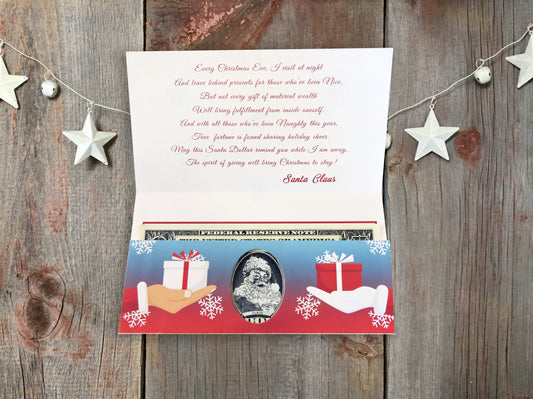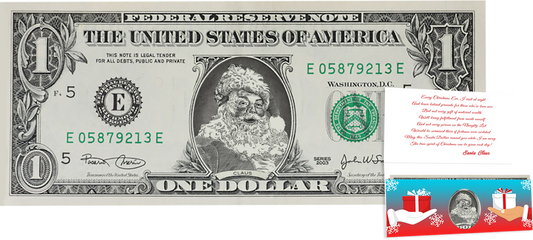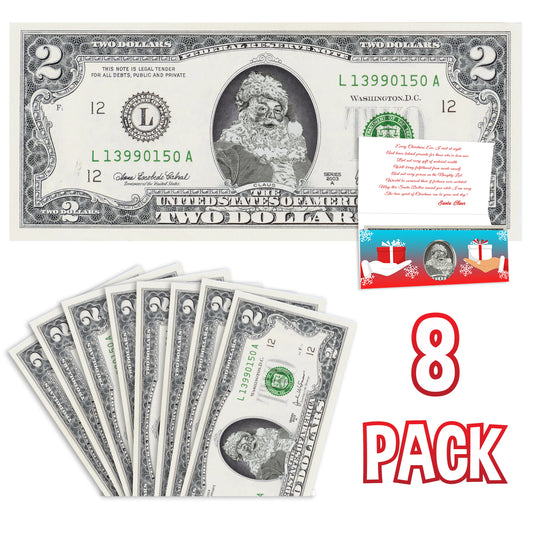The History of Santa Claus on REAL Money
Every year Santa Claus and his team of Elves travel the globe with their Christmas Magic from the North Pole to deliver gifts to those kids who've been Nice. The presence of Santa and his team of Elves has permeated many aspects of our culture, including seemingly leaving its direct mark on money in the United States.

When Did Santa Claus first Appear on Real Money?
Prior to 1860s during the Civil War when the Treasury Department began issuing their own Federal notes, certain banks in the United States were allowed to issue their own custom bank notes which redeemable for their cash value in gold.
During this time, in an attempt to gain popularity over other banks, collectable notes were issued by banks, including some who included an image of Santa Claus.
In the mid-1800s, the Saint Nicholas Bank in New York City released its own paper money featuring engraved images of Santa Claus delivering gifts to "good" boys and girls. These notes, which were made by private printers in several denominations including $3 bills, became highly sought-after collectibles by paper money enthusiasts and Santa devotees.
Which Banks Offered Santa Claus Dollars?
In total, 27 now obsolete notes featuring Santa Claus were issued by 21 banks in 8 states.
Obsolete bank notes, such as those issued by the Saint Nicholas Bank, were produced between 1792 and 1866 before the U.S. federal government began issuing its own paper money in the 1860s during the Civil War. They were issued by private banks and businesses that had successfully applied for a state charter.
The popularity of collectible notes began to increase for another reason, the direct tie of these notes to the supply and price of gold, which could lead to practical challenges. For example, when new gold was discovered, the value of currencies decreases.
In an effort to keep people from exchanging their notes for gold, some banks began to issue holiday-themed currency featuring images of popular holiday figures, such as Santa Claus. This strategy was intended to make people want to keep the notes as a collectible rather than exchanging them for gold.

The Popularity of Santa Claus and Why He was Chosen as a symbol for Banknotes?
The figure of Santa Claus was not always as popular as it is today. For a long time, Christmas was only recognized as a holiday in a few northern states in the United States. However, the release of Clement Clarke Moore's poem "Twas the Night Before Christmas" helped to bring Santa into the mainstream. In response to his growing popularity, some banks issued official U.S. bank notes featuring the image of Santa Claus.
Once national notes began to be issued
The use of holiday-themed currency, such as notes featuring Santa Claus, remains a interesting aspect of U.S. economic history.

Santa Claus has also appeared on other forms of numismatics, including checks, stock certificates, scrip, gift cards, tokens, medals, wishing coins, elongates, and altered currency. During and after World War I, emergency hyperinflation money featuring Kris Kringle, known as notgeld, was issued in Germany and Austria.
Santa Claus on Dollar Bills Today
Today, the tradition of Santa Claus on Dollar Bills continues with the Holiday Dollar Bills Company and the Official and Exclusive Santa Claus Dollar Bill, amongst other characters from the North Pole.






